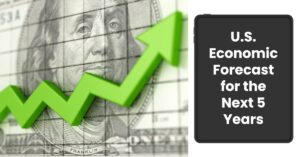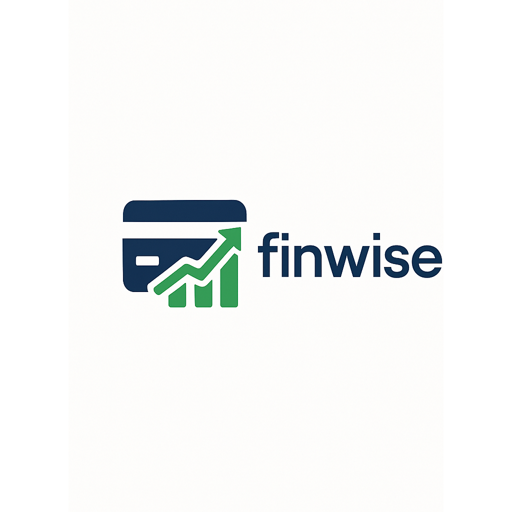U.S. Economy in 2025: What Experts Are Predicting
From interest and inflation rates to job growth, here’s what to anticipate in the coming year.

As we wade further into 2025, the U.S. economy stands at a fork in the road. It has been a choppy year or two that included pandemic recovery, inflationary pressures and aggressive interest rate hikes, so analysts are more than ever looking at important markers to understand how the land lies. Will 2025 usher in a return to stability, or will it be yet another rollercoaster?
Let us take a look at what economists and financial experts are expecting in the year ahead and what it could mean for consumers, investors and the credit industry.
Slow Yet Steady Economic Growth
The U.S. economy will plod along in 2025. GDP growth is forecast to be somewhere between 1.5% and 2.2%, according to forecasts from the Federal Reserve and private sector economists. This is a moderation of the solid recovery in 2023 and early 2024.
There are a number of reasons for this deceleration. For one thing, the higher interest rates enacted to slow inflation are still cooling consumer spending and business investment. Second, uncertainty in the global economy — much of which is pandemic-related but not all, when we think about supply chains and other macro considerations — breeds both corporate and household caution.
Though slower, most analysts agree that a recession is improbable in 2025, barring a major external shock.
Further-Softening Inflation due to material adjustment of Dynamics in Utility Prices.
Inflation began to ease in 2024 after accelerating to a peak in 2022 and remaining elevated in 2023. And that is also likely to remain the case in 2025.
The Consumer Price Index (CPI) is projected to increase by about 2.2% to 2.5% this year, much more in line with the Federal Reserve’s target of 2%. Declining energy prices, an easing of supply chain bottlenecks and reduced consumer demand are helping to reduce prices.
Still, housing costs and services inflation are sticky. Rent, insurance and medical prices continue to rise at a faster clip than other categories, creating difficulties for low- and middle-income households.
For people with credit card debt, a slowdown in inflation could translate to greater purchasing power and perhaps fewer rate increases by the Fed, which plays a direct role in APRs.
Interest Rates: Fed Takes a Timeout on Rates (For Now)
The Federal Reserve has held their federal funds rate relatively stable near 5.25% since early 2025 after a series of aggressive hikes form 2022 to 2024. With inflation edging closer to target, Fed officials have indicated they will be slow to cut rates too quickly.
The second half of 2025 is a contentious issue for economists when it comes to cuts. Others expect one or two small cuts by Q3 or Q4, depending on the inflation data and employment numbers. Others think the Fed will remain in a holding pattern all year to see if inflation is truly under control.
It translates directly into consumers’ credit card APRs, mortgages, auto loans and business borrowing. For individuals holding credit card debt, the message is louder and clearer than ever: In an environment, where interest rates are at their lowest levels and returns in financial markets are under pressure, you need to be smart about how you manage your borrowings.
Labor Market Stays Strong but Cools
A bright spot in the economic outlook continues to be the strength of the U.S. job market. The unemployment rate is forecast to remain low — around 4% — though a little above the sub-3. 8% levels seen in 2023.
Job growth is likely to cool somewhat, especially in tech, real estate and finance, where companies have already trimmed headcounts. But some sectors, such as healthcare, clean energy and infrastructure, are poised to grow supported by federal programs and demographic shifts.
Growth in wages is also projected to slow, with average hourly earnings up about 3.5% to 4%, down from prior peaks. This more moderate pace underpins slower price growth but could take away from consumer spending in the short-run.
Consumers Will Spend Differently — But Still Splurge
AMERICAN consumers are proving resilient even in the face of economic headwinds. By 2025, consumer spending is likely to be rising more modestly — say, 2 percent to 2.5, albeit enough to keep the economy expanding.
There will be some shifts in consumer behavior:
Lower and more cautious discretionary spend, especially in restaurants, entertainment and luxury goods.
Further expansion of travel and experiences, particularly among younger generations.
A shift back to value-driven shopping, and more interest in discounts, loyalty programs and “buy now, pay later” options.
And those trends will also affect how credit card issuers design their rewards offers and promotions. Anticipate heightened attention to cash-back offers, flexible redemption and alliances with value-minded retailers.
Credit and Consumer Debt
Americans are shouldering unprecedented amounts of credit card debt: Total balances amounted to more than $1.2 trillion at the end of 2024. Inflation, combined with higher interest rates, has forced more households to seek out credit to make ends meet.
Default rates are increasing, especially with younger borrowers and with those who have subprime credit scores. Lenders are reacting by tightening underwriting standards and providing incentives for on-time payments.
The credit market will likely be dominated by the following themes in 2025:
Fostering responsible credit through educational resources and mobile alerts.
Increasing the offerings of secured and starter cards for those rebuilding credit.
Modifying the minimum payment design to reduce the possibility of default.
Customers should take a close look at their credit card terms, pay more than the minimum due and tackle high-interest balances to help keep debt from snowballing.
Political and International Involvement
2025 is also an era of global discord and domestic political debate that could have economic repercussions.
In the global market, energy markets are unstable due to conflicts and supply bottleneck” especially in Europe and the Middle East. At home, the fallout from the 2024 elections and continued discussions about federal spending, taxation and regulation could influence business confidence and consumer sentiment.
One place to look for a potential break is in student loan policy. And although payments resumed in 2024, the rising pressure for some sort of additional relief or restructuring could lead to changes in how households budget and how they use credit.
What It Means for Credit Cardholders
Given all these factors in play, 2025 is a year that offers possibilities — and pitfalls — for consumers, particularly those carrying credit cards.
Here’s how to stay ahead:
Check interest rates: If the Fed lowers rates later this year, consider refinancing or transferring balances to cards with lower APRs.
Track your spending: Keep on top of categories where inflation remains high with the help of mobile apps to manage budgets.
Maximize your rewards: Couple it with categories that fit your current lifestyle — if that’s travel, groceries or gas.
Make payments on time: Late payments can ding your credit score and potentially trigger penalty APRs or a lower credit limit.
Final Thoughts
The U.S. economy in 2025 could be summarized as steady but skeptical. Inflation is cooling, unemployment is low and consumers are still spending — though somewhat more judiciously — so there’s reason for hope. But with rising rates, high levels of consumer debt and global uncertainty, we need to remain cautious and carefully manage our finances.
As a consumer, investor or credit card holder, it’s worthwhile for you to know what the big economic backdrop will be as you make decisions this year. Hang on, be disciplined, and react to the trends that will drive the road ahead.
What Consumers Can Do Keep Ahead
Given these challenges, here are some things consumers can do to defend themselves:
Budget realistically: Keep close tabs on your income and spending. Figure out what to cut back on and make sure you can cover minimum payments so that you don’t end up falling behind.
Pay more than the minimum: Whenever possible, paying more than the amount due cuts interest costs and decreases balances more quickly.
Try a balance transfer: Some credit cards have 0% APR balance transfer offers that last 12–18 months. This can be a reprieve for people with good credit to become debt-free while they pay it off without interest.
Evade new debt: Pause and process before taking on new debt, especially high-interest loans or new credit cards — unless you must.
Get credit counseling: Save this option for last, if possible: Nonprofit credit counseling organizations have been known to develop credit management plans tailor-made to your financial situation, which can include lower interest rates and waived fees from lenders.
Our Post

High Interest Rates, Credit Cards and the U.S. Consumer: What to Know in 2025
The Note: How Decelerating U.S. Economic Growth Affects Using Consumer Credit


